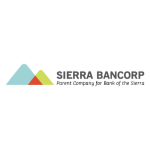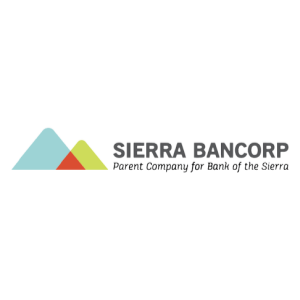Welcome to our dedicated page for Sierra Bancorp SEC filings (Ticker: BSRR), a comprehensive resource for investors and traders seeking official regulatory documents including 10-K annual reports, 10-Q quarterly earnings, 8-K material events, and insider trading forms.
Sifting through the capital ratios, loan-loss provisions, and branch expansion details buried in Sierra Bancorp’s disclosures can feel like another full-time job. That’s why investors begin their research here, on a page built to answer real questions—like “Where do I find Sierra Bancorp insider trading Form 4 transactions in real time?”—without wading through EDGAR’s maze.
Our AI reviews every submission the moment it hits the SEC, turning a 200-page annual report into a concise briefing. From the Sierra Bancorp annual report 10-K simplified to each Sierra Bancorp quarterly earnings report 10-Q filing, you’ll see key ratios, net interest margin shifts, and credit-quality metrics highlighted instantly. Need to track management sentiment? Receive alerts for Sierra Bancorp Form 4 insider transactions real-time, complete with easy-to-read charts of executive stock moves.
Wondering how a new branch opening might affect deposits? The AI tags every Sierra Bancorp 8-K material events explained, so you know which disclosures signal growth or risk. Proxy season questions such as “Sierra Bancorp proxy statement executive compensation” are resolved with side-by-side visuals comparing pay to peer banks.
- Instant AI-powered summaries that decode complex banking jargon
- Complete coverage of 10-K, 10-Q, 8-K, Forms 3/4/5, and S-3 offerings
- Drill-downs for Sierra Bancorp earnings report filing analysis across loan categories
- Mobile and desktop alerts for Sierra Bancorp executive stock transactions Form 4
Whether you’re understanding Sierra Bancorp SEC documents with AI for credit-risk models or scouting dividend sustainability, this page delivers the data, context, and speed professionals expect—no manual scrolling required.
Sierra Bancorp director James C. Holly reported a non-derivative transaction in the company’s common stock. On 12/10/2025, he disposed of 10,400 shares in a transaction coded G at a reported price of $34.41 per share.
After this transaction, the filing shows he beneficially owned 302,970 common shares directly. It also lists 30,000 common shares held indirectly through a limited partnership and an additional 11,139 common shares held directly, reflecting his ongoing ownership stake in BSRR.
Sierra Bancorp executive Cindy L. Dabney, who serves as SVP and Chief Accounting Officer, reported multiple stock transactions involving company shares. On 12/03/2025, she exercised a total of 4,000 stock options at exercise prices of $28.21, $27.35, $27.30, and $27.11 per share, converting them into common stock. To help cover the option exercise cost and related taxes, she sold portions of the acquired shares in several transactions at a price of $32.00 per share. After these exercises and sales, she continued to hold a meaningful direct ownership position in Sierra Bancorp common stock, reflecting ongoing personal investment exposure to the company’s performance.
Sierra Bancorp (BSRR) director Morris A. Tharp reported receiving an equity grant of 1,445 shares of common stock on 11/20/2025. The filing shows these shares as acquired at a price of $0, reflecting a time-based restricted stock award rather than an open‑market purchase. Following this grant, Tharp beneficially owns 11,139 shares of Sierra Bancorp common stock directly.
The award was made under the company’s 2023 Equity Incentive Plan and is described as time-based restricted stock that vests in one year, subject to forfeiture if certain conditions in the grant agreement are not met. The form reports no derivative securities transactions, focusing solely on this non-derivative stock award and updated ownership position.
Sierra Bancorp (BSRR)1,445 shares of common stock on 11/20/2025. The filing describes this as time-based restricted stock granted under the company’s 2023 Equity Incentive Plan, with the shares scheduled to vest in one year. The award was recorded at a price of $0 because it is a compensatory grant rather than an open-market purchase. Following this transaction, the director directly beneficially owned 11,139 shares of Sierra Bancorp common stock.
Sierra Bancorp (BSRR) director Ermina Karim reported a new equity award. On 11/20/2025, she received 1,445 shares of Sierra Bancorp common stock as a time-based restricted stock grant under the company’s 2023 Equity Incentive Plan. The award was reported at a price of $0 per share, reflecting that it is a compensatory grant rather than an open‑market purchase. Following this transaction, she beneficially owns 6,702 shares of Sierra Bancorp common stock held directly. The restricted shares vest in one year and are subject to forfeiture upon certain events described in the grant agreement.
Sierra Bancorp (BSRR)1,445 shares of time-based restricted common stock under the company’s 2023 Equity Incentive Plan. The award vests in one year, and the shares are subject to forfeiture if certain conditions in the grant agreement occur. Following this grant, Holly reports 11,139 shares of common stock held directly and additional directly held shares, along with 30,000 shares held indirectly through a limited partnership.
Sierra Bancorp (BSRR) director reports equity award
A director of Sierra Bancorp reported receiving 1,445 shares of common stock on 11/20/2025 as an award of time-based restricted stock under the company’s 2023 Equity Incentive Plan. The award was recorded at a price of $0, reflecting that it was a grant rather than an open‑market purchase, and will vest in one year, subject to forfeiture under conditions described in the grant agreement. Following this award, the reporting person holds 6,702 shares of Sierra Bancorp common stock directly and 2,000 shares indirectly through Chrisman and Associates, LLC.
Sierra Bancorp (BSRR)1,445 shares of common stock as an award of time-based restricted stock under the company’s 2023 Equity Incentive Plan at a stated price of $0 per share. The award vests in one year and is subject to forfeiture if certain conditions in the grant agreement occur.
Following this grant, the filing shows Dutto beneficially owning 11,139 shares of Sierra Bancorp common stock directly, an additional 4,870 shares directly, and 500 shares indirectly through his spouse.
Sierra Bancorp (BSRR) director Vonn R. Christenson reported an equity award under Section 16 rules. On 11/20/2025, he received 1,445 shares of common stock as an award of time-based restricted stock granted under the company’s 2023 Equity Incentive Plan at a reported price of $0, reflecting a compensatory grant rather than an open-market purchase.
After this grant, Christenson beneficially owns 11,139 shares of Sierra Bancorp common stock directly, plus additional indirect holdings of 189 shares and 286 shares held by his spouse. The restricted stock vests in one year and is subject to forfeiture if certain events described in the grant agreement occur.
Sierra Bancorp director reports new restricted stock grant
A Sierra Bancorp (BSRR) director filed a Form 4 disclosing an award of 1,445 shares of common stock on 11/20/2025. The filing shows this was an acquisition at a stated price of $0, reflecting an equity award rather than an open‑market purchase.
The award is time-based restricted stock granted under the company’s 2023 Equity Incentive Plan. These shares vest in one year and are subject to forfeiture if certain events specified in the grant agreement occur. After this transaction, the director directly owns 7,806 shares of Sierra Bancorp common stock, with an additional 3,181 shares held indirectly.


